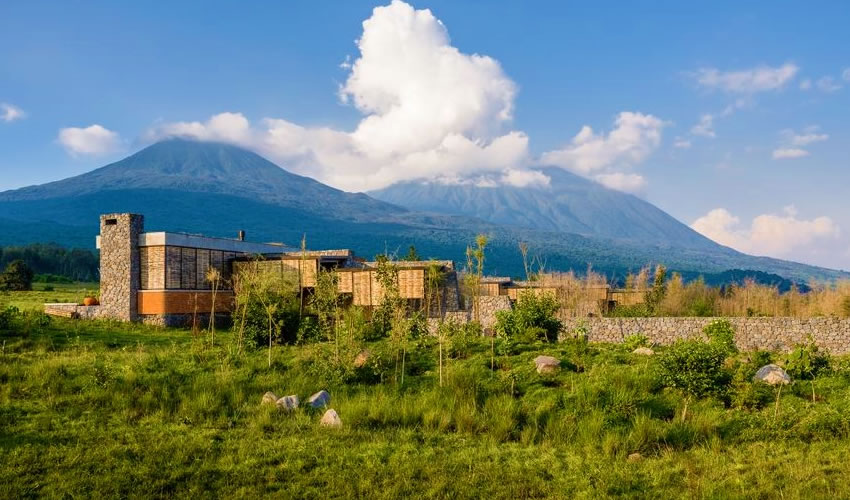- GET IN TOUCH WITH US:
- +256 753518160
- +256 777842166
- info@experiyatourcompany.com

What’s the best coffee to buy in Uganda?
November 10, 2025
What’s the best route for a self-drive safari in Uganda?
November 10, 2025Can I Visit Mabamba Bay to See Shoebills?
Uganda is a paradise for bird lovers, home to over 1,000 bird species that flourish in its forests, wetlands, and savannas. Among all these spectacular species, one stands above the rest in fame and fascination — the shoebill. This prehistoric-looking bird, with its massive shoe-shaped bill and statuesque presence, captures the imagination of every traveler who sees it. And the best place to encounter this incredible species up close is at Mabamba Bay Wetland, located just outside Entebbe.
For anyone wondering, yes — you can visit Mabamba Bay to see shoebills, and the experience is one of the most rewarding wildlife encounters in Uganda. It’s not just a birdwatching trip; it’s an intimate journey through a lush wetland ecosystem, offering a glimpse of one of nature’s most extraordinary creatures in its natural habitat.
The Magic of Mabamba Bay
Mabamba Bay Wetland is a Ramsar Site — a globally recognized wetland of international importance — located along the northern shores of Lake Victoria, about 50 kilometers southwest of Kampala and 12 kilometers west of Entebbe. The bay forms part of the greater Lake Victoria Basin, an area of sprawling papyrus swamps, narrow waterways, and floating vegetation.
Mabamba’s name comes from the Luganda word “Mabamba,” meaning “broad or wide,” referring to the extensive papyrus channels that stretch across the area. It is these channels, teeming with fish and aquatic life, that make Mabamba a perfect feeding ground for the shoebill. The swamp is also home to over 260 other bird species, making it one of Uganda’s most important birding destinations.
The wetland is managed by the local community through the Mabamba Wetland Eco-Tourism Association, ensuring that tourism directly benefits conservation and the livelihoods of residents. When you visit, you’re not only seeing Uganda’s rarest bird but also supporting sustainable eco-tourism that protects one of the country’s most delicate ecosystems.
The Legendary Shoebill
The shoebill (Balaeniceps rex) is one of the world’s most unique and enigmatic birds. It’s often described as a cross between a stork, a heron, and a pelican — though in truth, it belongs to its own ancient family line. With its towering height (often over four feet), grey plumage, and massive bill shaped like a shoe, the shoebill looks like something out of the age of dinosaurs.
Its large bill is not just for show. The bird uses it to hunt lungfish, frogs, baby crocodiles, and even snakes. Shoebills are known for their patient hunting style — standing motionless for long minutes, sometimes even hours, before striking with lightning speed when prey moves within reach. Their stealth, power, and uncanny stillness have made them symbols of patience and focus in many cultures.
There are fewer than 8,000 shoebills left in the world, and they are classified as vulnerable by the International Union for Conservation of Nature (IUCN). Uganda holds some of the most stable populations, making it one of the best countries on Earth to see these incredible birds in the wild.
Why Mabamba Bay is the Best Place to See Shoebills
While shoebills can also be found in other wetlands like Murchison Falls, Semliki, or Ziwa Rhino Sanctuary, Mabamba Bay remains the most accessible and reliable site for sightings. Its proximity to Entebbe and the high probability of spotting shoebills make it the premier destination for birdwatchers, photographers, and nature enthusiasts.
Most visitors to Mabamba report near-guaranteed sightings, especially in the early morning when the shoebills are actively hunting. Because the wetlands are shallow and navigated by small canoes, you can approach quietly, gliding through the papyrus channels without disturbing the birds. Seeing a shoebill in its natural environment — tall, poised, and perfectly still among the reeds — is an unforgettable experience.
The Experience of Visiting Mabamba Bay
Visiting Mabamba Bay typically begins with a drive or a short boat transfer from Entebbe. Many travelers choose the scenic boat route across Lake Victoria, which takes about 45 minutes to an hour. The ride itself is beautiful — the lake glimmers under the sun, fishermen cast their nets, and birds skim across the water. As you approach Mabamba’s edges, the landscape transitions into a lush green maze of papyrus.
Upon arrival, local guides — trained and certified by the community tourism association — welcome you and help organize the canoe excursion. These guides know the swamp intimately; they can recognize bird calls, follow subtle movements among the reeds, and spot shoebills from impressive distances.
The birding tour is done in traditional wooden canoes or small motorized boats. As the boat glides quietly through the narrow channels, you’ll feel completely immersed in the wetland world — surrounded by the sounds of frogs, the hum of insects, and the songs of hundreds of birds.
The guides often paddle silently to maintain peace in the habitat. You’ll pass by elegant malachite kingfishers darting across the water, African jacanas walking delicately on floating lilies, and pied kingfishers hovering midair before diving for fish. And then, suddenly, the guide may point ahead — a tall grey silhouette stands motionless in the distance. The shoebill.
The boat slows down as you approach. The bird’s stillness is mesmerizing, its large bill and sharp gaze commanding attention. Every detail — the ridged beak, the tufted crown feathers, and its piercing blue eyes — gives it an almost mythical aura. Watching a shoebill hunt or take flight, with its enormous wings flapping gracefully, is one of the most iconic wildlife moments Uganda offers.
Other Birds and Wildlife in Mabamba Bay
While the shoebill is undoubtedly the star, Mabamba Bay offers much more for bird lovers. Over 260 bird species have been recorded here, including several rare and endemic ones. Among them are the papyrus gonolek, African pygmy goose, blue-breasted bee-eater, African jacana, purple heron, white-winged warbler, African marsh harrier, and black crake.
Photographers find Mabamba a dream destination because of its light, colors, and abundance of subjects. The tranquil water reflects the sky and vegetation beautifully, while the proximity to birds allows for excellent photography opportunities.
Besides birds, visitors occasionally spot sitatungas (a rare swamp antelope), otters, and monitor lizards. The combination of aquatic and terrestrial wildlife gives Mabamba Bay a distinct ecological richness that few wetlands can match.
When is the Best Time to Visit Mabamba Bay?
The best time to visit Mabamba Bay is early in the morning, between 7:00 a.m. and 10:00 a.m., when the shoebills are most active and the water is calm. They tend to retreat deeper into the swamp during the heat of the day, making early hours the prime window for sightings.
Mabamba is a year-round destination, but the dry seasons from December to February and from June to August are the most comfortable for visitors. During the wet months (March–May and September–November), the swamp becomes more flooded, which can make navigation slightly challenging but also enhances the lush scenery and bird activity.
How to Get to Mabamba Bay
From Entebbe, you can reach Mabamba Bay either by road or by water. The road route involves a 45-minute drive through Kisubi and Nakawuka villages to Kasanje, from where you proceed to the wetland entrance. The boat route, on the other hand, departs from Entebbe’s Nakiwogo landing site and crosses Lake Victoria to Mabamba in about 50 minutes.
Both routes offer beautiful views and can be easily arranged through a reputable tour operator. For birdwatchers and nature enthusiasts, the boat route is often preferred for its scenic value and opportunity to spot more aquatic birds.
Tips for Visiting Mabamba Bay
To make the most of your visit, wear light, comfortable clothing in neutral colors to blend with the environment. A wide-brimmed hat, sunscreen, and insect repellent are recommended, as are waterproof shoes for getting in and out of the canoes. Binoculars and a camera with a good zoom lens are essential for birdwatching and photography.
It’s also important to remember that the shoebill, despite being large and seemingly calm, is a wild bird. Keep a respectful distance and avoid loud noises or sudden movements that could disturb it. The local guides are skilled at positioning the canoe for the best views without causing any stress to the birds.
Why Mabamba Bay Should Be on Your Uganda Itinerary
Mabamba Bay is more than just a birding destination — it’s a living, breathing ecosystem that embodies the beauty and diversity of Uganda’s natural heritage. It offers an experience that’s peaceful, educational, and unforgettable. Whether you’re an avid birder, a nature photographer, or simply a traveler seeking something extraordinary, watching the shoebill in its wetland kingdom is an encounter that stays with you forever.
The combination of accessibility, conservation success, and remarkable wildlife viewing makes Mabamba Bay an essential stop for anyone visiting Uganda. It’s also a perfect half-day excursion for travelers arriving or departing from Entebbe, offering a calm and scenic introduction to Uganda’s wild side.
Book Your Mabamba Bay Experience with Experiya Tour Company
If you’re dreaming of seeing the elusive shoebill at Mabamba Bay, let Experiya Tour Company make it happen. With their expert local guides and seamless planning, Experiya ensures your trip is not only successful but deeply enriching. They handle all logistics — from transport and boat arrangements to professional guiding and photography support.
Experiya Tour Company is known for crafting personalized experiences that balance adventure, comfort, and authenticity. Whether you’re visiting Mabamba as part of a larger birding itinerary, combining it with gorilla trekking, or pairing it with a Lake Victoria sunset cruise, Experiya designs every detail to perfection.
Book your Mabamba Bay shoebill adventure with Experiya Tour Company and witness one of nature’s rarest and most magnificent birds in its natural habitat — an experience that defines the wild heart of Uganda.




